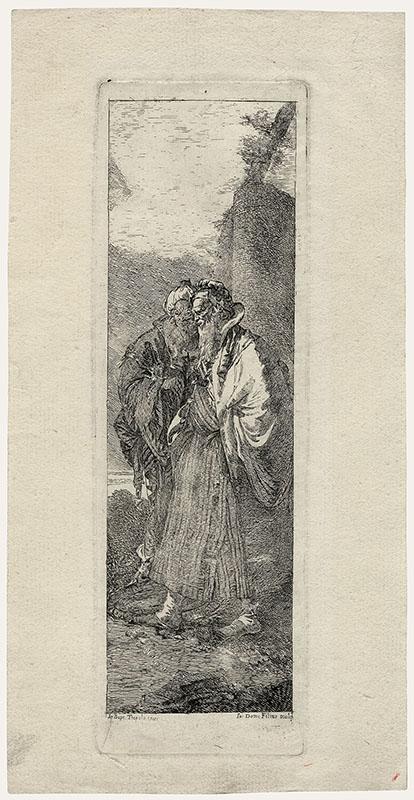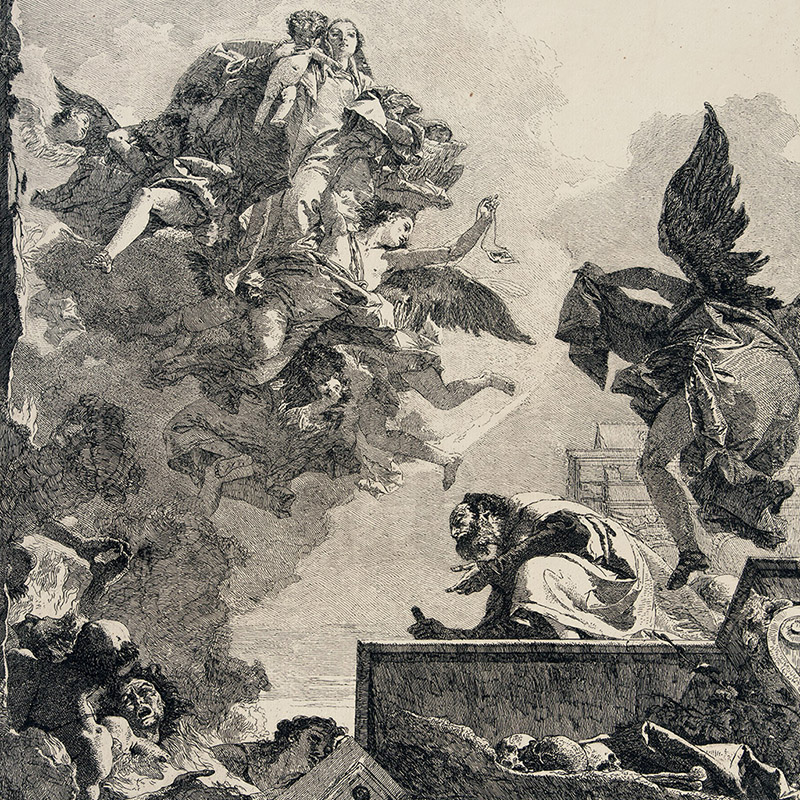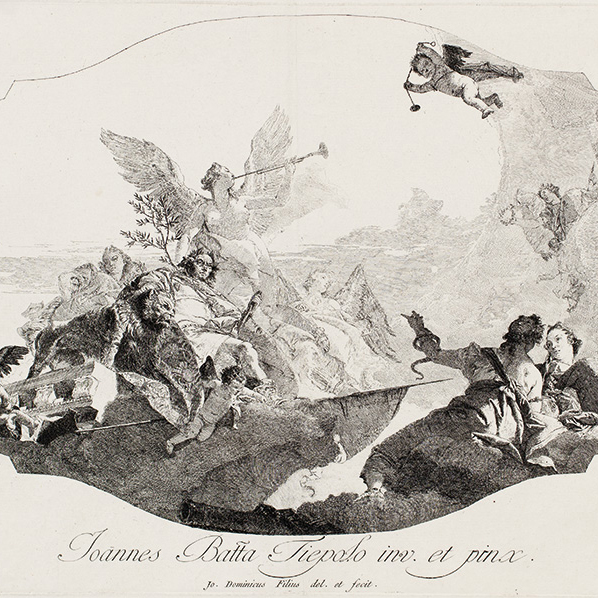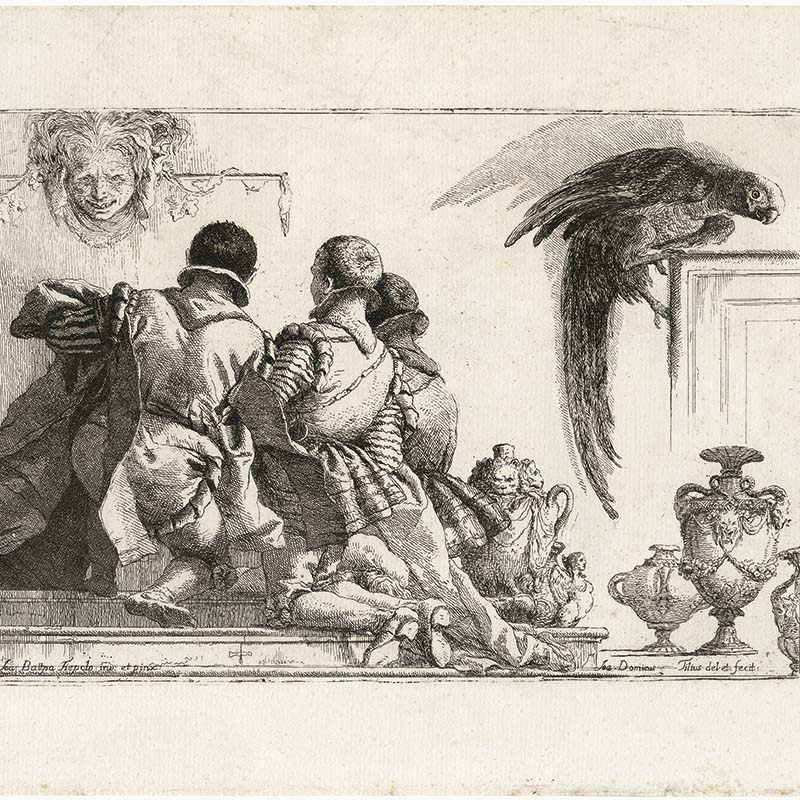Giovanni Domenico Tiepolo
Venice 1727 - 1804
1757-58
To the platemark 278 x 87 mm, the sheet 324 x 165
This print faithfully reproduces one of a series of four paintings , all property of the Rothschild collection, Frankfurt, and now on display at the National Gallery in London. Executed between 1750 and c.1755, the series was inspired by episodes and characters in Torquato Tasso’s Gerusalemme Liberata, published in 1581.
The lower margin is inscribed Io: Bapt: Tiepolo Inv / Io: Dom: Filius sculp., proving that the composition was originally conceived by Giandomenico’s father, Giambattista, the most celebrated painter of the Tiepolo family.
Inscribed on the plate at the bottom margin Io: Bapt: Tiepolo Inv / Io: Dom: Filius sculp. proving that the original composition was conceived by the father of Giandomenico, the most celebrated painter Giambattista Tiepolo.
References:
Succi, I Tiepolo, Virtuosismo e Ironia, 1988, p. 179, no. 78, only state;
Aldo Rizzi, Le Acqueforti dei Tiepolo, 1970, n. 222, 128.
Price: 1,350.00 €
Information on the master
Domenico was born in Venice, studied under his father, and by the age of 13 was the elder Tiepolo's chief assistant. By the age of 20, he was producing his own work for commissioners. He assisted his father in Würzburg, decorating the famous stairwell fresco, in Vicenza at the Villa Valmarana in 1757, and in Madrid at the palace of Charles III.
His painting style developed after the death of his father in 1770, at which time he returned to Venice, and worked there as well as in Genoa and Padua. His painting, though keeping the decorative influence of his father, moved from its spatial fancy and began to take a more realistic direction. His portraits and scenes of life in Venice are characterized by movement, colour, and considered composition.
Many of Domenico's works are drawings, and as his father, he was a fine draftsman and a competent etcher. He produced 104 sketches of Punchinello, the standard character of the commedia dell'arte, a physically deformed clown. These were created as Entertainments for the Children, and attempted to poke fun at the pretensions and behaviour of the viewer.
Other works of the master



